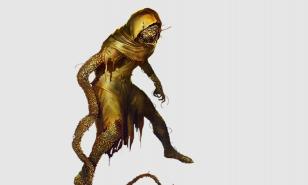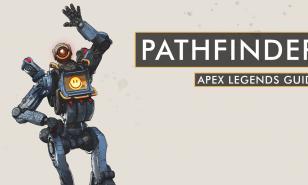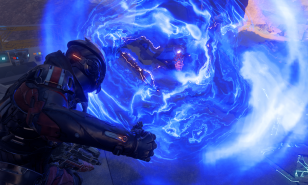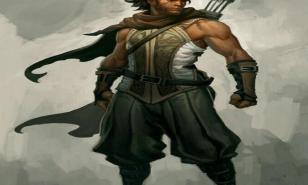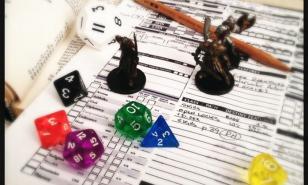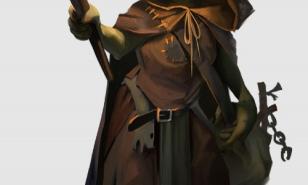[Top 20] Pathfinder Best Legendary Weapons
![[Top 20] Pathfinder Best Legendary Weapons Best Pathfinder Legendary Weapons](https://www.gamersdecide.com/sites/default/files/styles/news_images/public/best-pathfinder-weapons-banner.jpg)
Legendary weapons are awesome. By having their own name they get to sound unique and special but with unique powers they actually are. Let’s take a look at what Pathfinder has to offer.
20. Brutal Axe (Mythic)
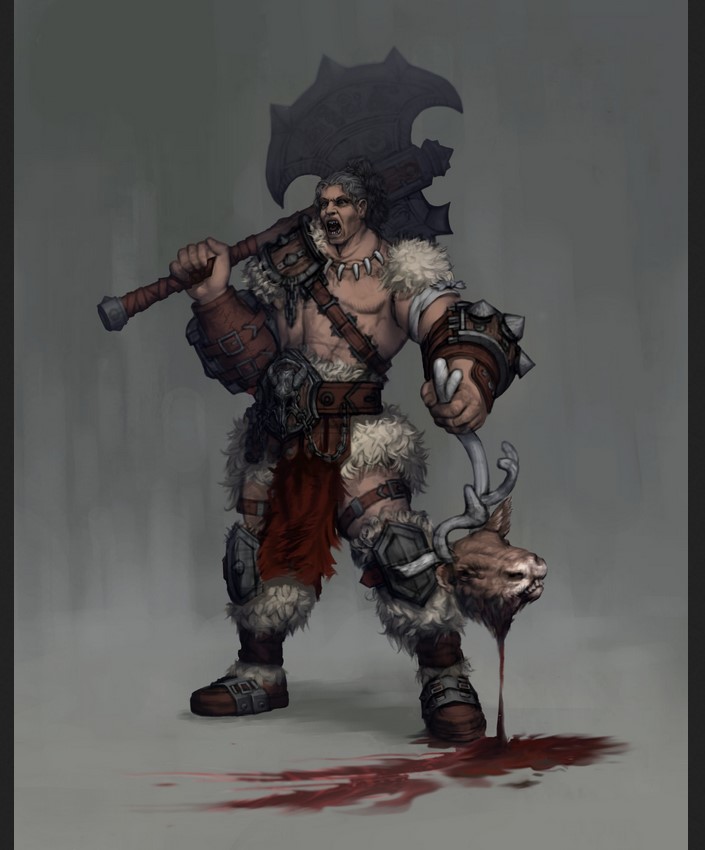
An armour smashing barbarian
Brutal is a fitting title for this +1 adamantine greataxe as its key feature improves your ability to sunder (i.e. break) enemy equipment. While as listed on D20PFSRD it is only a +1, it scales very well throughout your campaign if you’re willing to spend the gold on further enhancing it.
The brutal axe is a +1 adamantine greataxe which deals an extra d12 damage when you make sunder attempts. If you’re making a sunder build you’re going to take improved sunder as early as possible but the Brutal Axe will then give you greater sunder for free. This, combined with its other powers, really helps you get your sunder feats quickly, especially if you’re a fighter with a feat at every level.
But if you’re playing a class with fewer feats like skald or paladin you can afford to actually take the feats a little later and use your earlier feats for others you may need like power attack, furious focus, extra rounds of raging song, or skald’s vigour.
Thanks to being made of adamantine, you get to ignore up to 20 hardness, making breaking most weapons and armour super easy. As you progress and get those extra feats you’re going to have an even easier time smashing your opponent’s gear to pieces.
A potential drawback is foes reliant on natural armour and attacks, meaning there’s nothing to break. But you’re using a two-handed weapon anyway so you’re not exactly out of your element. The only larger consideration is money. If your party is going to be relying on stripping foes of their gear for most of your gold then breaking all their weapons and armour might not be the best play. If your GM is generous and has NPCs paying you handsome sums for your work then go nuts. You’re going to have a lot of fun with this weapon.
Why the Brutal Axe is great:
- Fantastic at early levels thanks to being adamantine ignoring up to 20 hardness
- Can save you feats if you really need them for something else or hasten your feat progression by giving you the next one along for free, giving it fantastic longevity
- By using the mythic power, after making a normal attack you can then make a sunder attempt, though without being able to push the excess damage onto the enemy
Build requirements:
- 12,320gp
- Feats: Craft magic arms and armour, mythic crafter
- You also need access to the spells bull’s strength and ironwood so you’ll need to find a druid willing to help for the latter
Brutal Axe stats:
- Buy price: 21,320 gp
- CL: 11th
- Weight: 12lbs
- Aura: Moderate transmutation
19. Bow of The Hunter (Mythic)
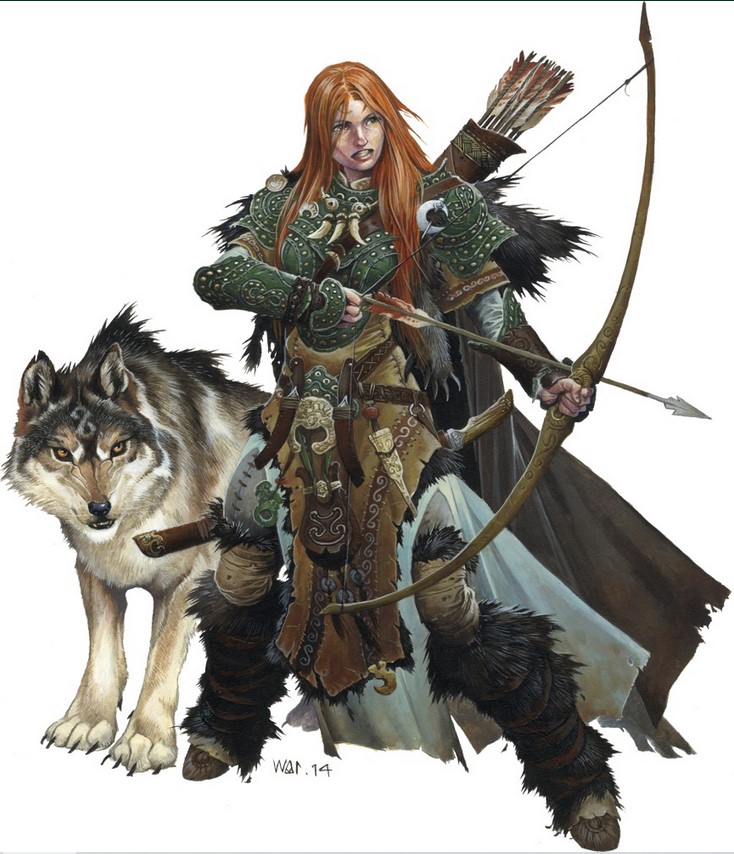
A hunter with her trust bow and wolf companion
Okay so the name is a bit lame. Not very exciting but I swear it’s worth reading about it. This bow is +1 and has +6 composite as well as the endless ammunition and distance enchantments. Not keeping track of arrows is a very nice quality of life enchantment, though it doesn’t exactly save very much gold given how cheap arrows are. But the description does note that it creates a golden arrow when drawn which is a cool bit of fluff.
But distance is an awesome enchantment, doubling your longbow’s range from 110ft to 220ft. No penalties for range increments for you even on some of the larger battlefields. Stand well back and let loose to your heart’s content.
The mythic power here is very cool and is by far the main draw of this bow. By using your mythic power you can effectively attack every enemy within sixty feet of you. Attack something far away then compare your attack roll against anything in range of the mythic power. Worth noting is that the description does not say the initial attack has to be something within sixty feet, allowing you to make use of the distance enchantment and hopefully hurt anybody getting too close for comfort.
Unfortunately if you roll a critical threat you don’t get to do that triple damage to all of them. Pick one target to get the extra damage on. But the versatility is nice so you’re not locked into getting the crit on your original target. Pick your ideal target. Take that guaranteed kill or somebody who’s been difficult to hit so you want to try getting more bang for your buck.
Why Bow of The Hunter is great:
- Extra distance so no penalties on super far away opponents
- Distance can turn you into a great sniper. Get some stealth attacks in before combat starts proper
- The mythic power can save you from having to make the switch to melee combat in a pinch
- Mythic power can also help your melee allies by doing a nice bit of damage to whoever they’re fighting without worrying about cover or keep enemies off your squishy spellcasters
- No counting ammunition which is more a convenience than a powerful ability but it’s nice all the same
- +6 composite out of the gate is fantastic, allowing you to add a lot of extra damage if you have high strength
Build requirements:
- 19,500gp
- Feats: Craft magic arms and armour, mythic crafter
- Spells: clairaudience/clairvoyance, haste
Bow of The Hunter stats:
- Price: 38,000gp
- CL: 15th
- Weight: 5lbs
- Aura: Strong transmutation
18. Dragonbreath Bow (Mythic)
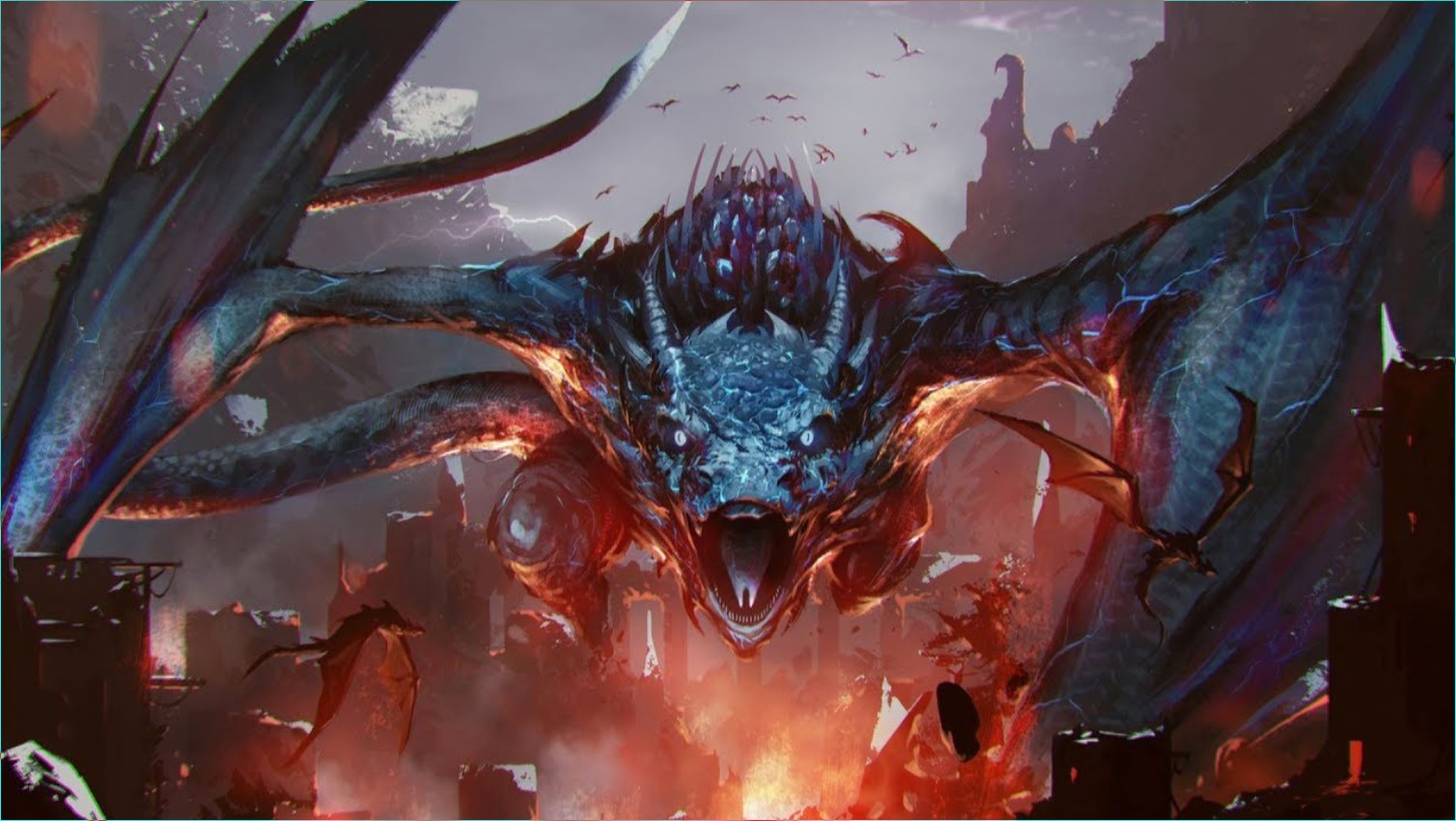
Look! A dragon!
Okay now that’s a name and luckily for this weapon, its ability lives up to the name. The most important thing about this longbow is that when you expend one use of mythic power it targets touch AC using a flaming arrow it creates when drawn. This basically turns it into a firearm without the longer reload time.
Granted it can only hit creatures within its first range increment but at 100ft it’s not like you’re going to struggle for targets. Attacks made with this flaming arrow deal 3d10+2 on top of the flaming burst enchantment.
Without the use of mythic power this bow is fairly standard and not so special so probably isn’t the best on a dedicated ranged build as it lacks any composite. But if you’re a switch hitting ranger, pull this power out at the beginning of combat to deal some awesome damage then dive into the fray with your sword.
As the flaming arrow is a touch attack you don’t even need to invest in dexterity so you could take this as a big strong barbarian or fighter to dish out a load of damage then charge in with your greataxe.
Why Dragonbreath Bow is great:
- Perfect for switch hitters as the mythic power letting you make touch attack allows you to not bother investing into dex as touch AC is generally fairly low
- The ranged touch attack also makes it weirdly good on strength builds despite the lack of composite
- A nice GM might let you buy a composite bow to turn into a dragonbreath bow, allowing this to really shine on ranged build
- The mythic power gives you the benefit of a firearm without the feat investment into loading times
Build requirements:
- 25,375gp
- Feats: Craft magic arms and armour, mythic crafter
- Spells: Flame strike and scorching ray
Dragonbreath Bow stats:
- Price: 50,375gp
- CL: 14th
- Weight: 3lbs
- Aura: Strong evocation
17. Fire Goddess’ Blade (Mythic)
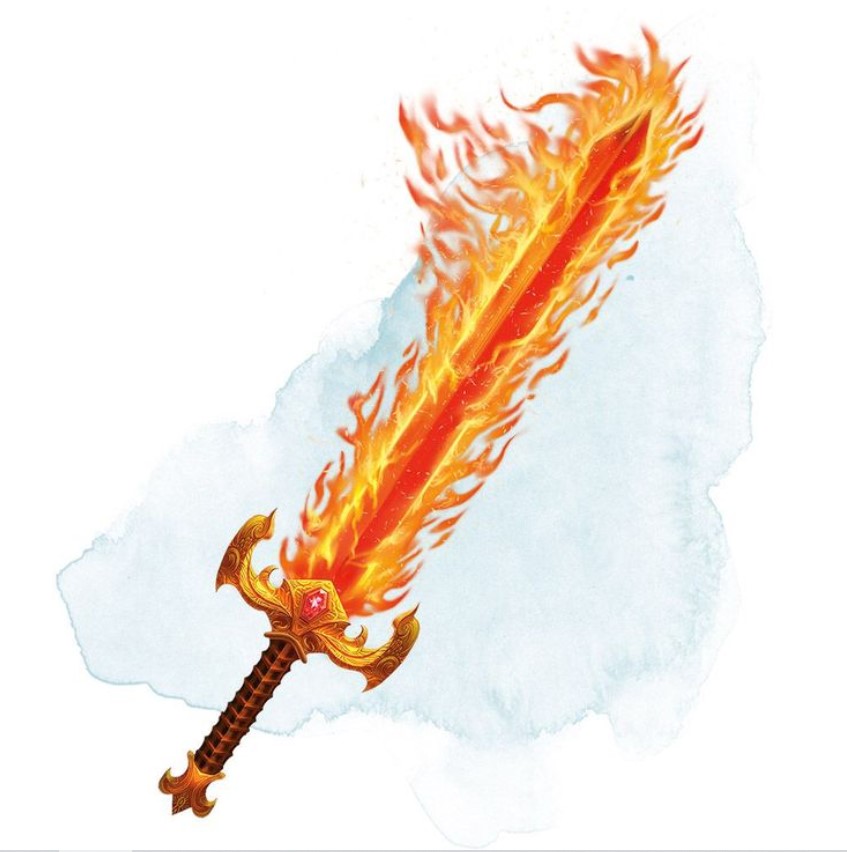
A flaming sword
While the name is thematically appropriate for a religious class, the Fire Goddess’ Blade (FGB) is actually a good fit for a wide range of builds. As a +1 flaming scimitar it’s excellent both as a primary weapon for martial classes or a necessary sidearm for casters. With ranks in perform (dance) and the feat dancing dervish it becomes eligible for weapon finesse.
The FGB has two very potent powers. For the first it can do three times a day without any need to spend your mythic points. As a swift action the sword turns into a flaming blade as per the spell flame blade and deals 1d8+9 damage which is likely an upgrade earlier on into a campaign, though later it does drop off a bit. The big advantage of this, however, is its ability to overcome DR to slashing damage without the need to switch weapons, much like the bladebound magus’ energy attunement ability.
The FGB’s mythic power can only be used once a day but it’s more than powerful enough to make up for this. By spending one mythic power your blade transforms into a large fire elemental for ten minutes. This is almost certainly going to last for a couple of encounters if you don’t dawdle.
Why the Fire Goddess’ Blade is great:
- By turning your slashing damage into fire damage, you can avoid many physical types of DR by doing fire damage. Great for any build
- You can turn it into a flame sword three times a day without expending mythic points, giving you more to use elsewhere. Useful for anybody but I suggest it for two-weapon fighting as you’ll have plenty of mythic points to use on your other weapon
- Great for swashbucklers as scimitars crit threat on 18-20, giving you more opportunities to earn panache back. Enchant it again with keen down the line and you can crit threat on a 15 or higher
- The ability to summon is rarely a bad option, especially when it’s a large creature. Rogues get a flanking buddy to sneak attack with, spellcasters get a bodyguard. Sure you lose the scimitar when it transforms but any smart player has a backup weapon
- A large creature is fantastic as enemies are going to have a hard time both approaching and disengaging without provoking attacks of opportunity
- If you can sweet-talk your GM, you may be able to combine this with the flame blade dervish feat. Granted you need the ability to cast flame blade as a spell or spell-like ability, limiting it to the shaman and druid classes but if you can make this work you get +10ft move speed, +4 acrobatics, add your charisma to flame blade’s damage, and can ignore 30 points of fire resistance while you have the spell active. Awesome if you can make it work but talk to your GM
Build requirements:
- 16,815gp
- Feats: Craft magic arms and armour, mythic crafter
- Spells: Flame blade and greater magic weapon
Fire Goddess’ Blade stats:
- Price: 33,315gp
- CL: 18th
- Weight: 4lbs
- Aura: Strong conjuration and transmutation
16. Gun With No Name (Mythic)
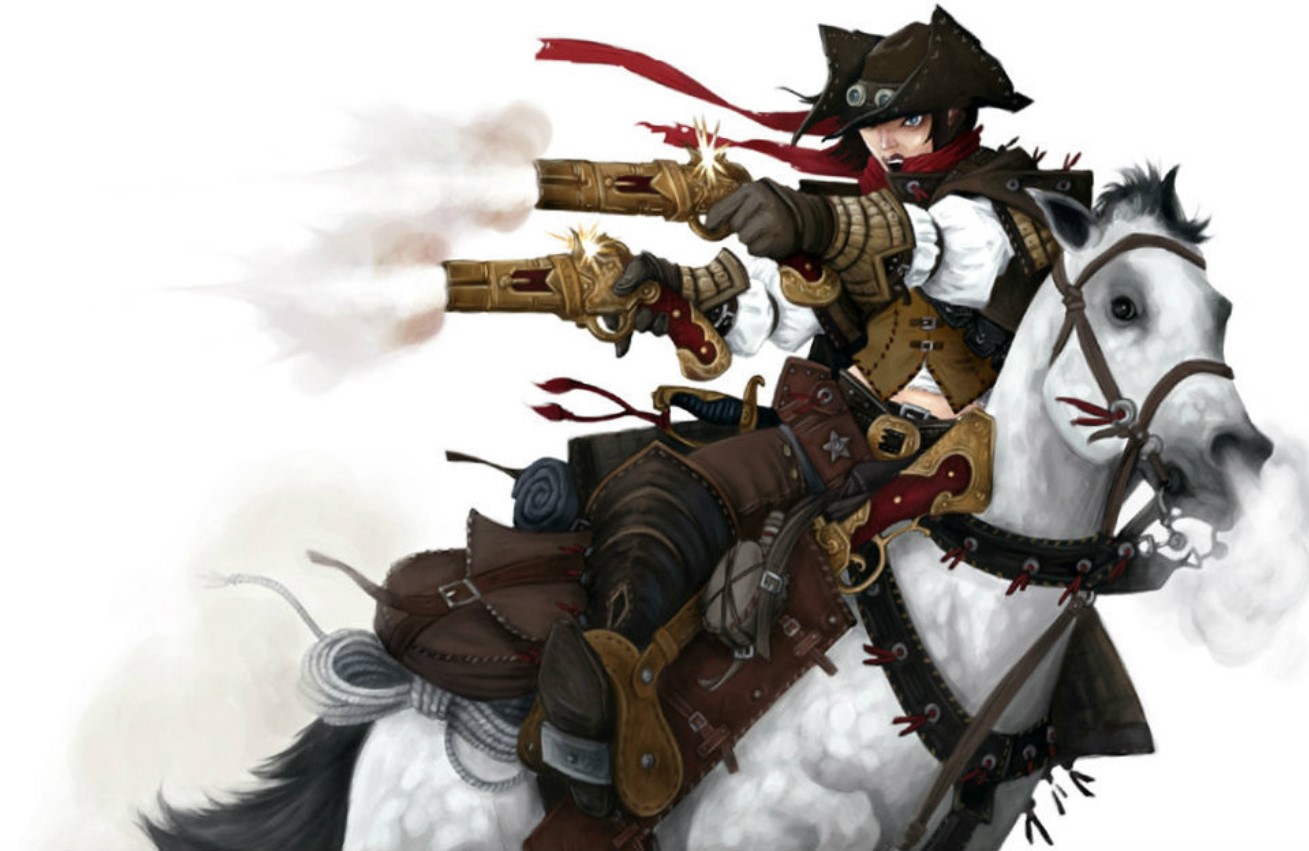
A very cool, Western-sounding name. Perfect for a strong and silent gunslinger which is the class this weapon works best for as this is a +2 mythic, bane, and greater lucky pepperbox. Bane is often hit or miss but if it has bane on something common in the setting then that’s a win!
Greater lucky gives this pepperbox a pool of 3 grit points you can feed into your nameless weapon at the end of a day or during periods of travel.
What’s very cool about this weapon is the fact that you can choose to either use grit or your mythic power to reload one of its barrels as a swift action by magic which from reading the description I presume means you don’t have to buy the extra materials. Very nice if you’re playing a setting where gunpowder is more expensive. You can fill it for free during travel days!
While carrying the nameless gun you’re also immune to scrying, and any other spells that attempt to read your thoughts, location, or alignment. On top of this the gun is also immune to spells like locate object. Perfect for keeping your mysterious character mysterious. Good for NPCs too, GMs. Ensure the party are never quite sure whether to trust the mysterious stranger.
Why the Gun With No Name is great:
- Extra three grit points are never to be sniffed at, especially when you can use them to reload for free. Even better considering the pepperbox only has a range of 20ft so you’re gonna need to be up close and personal and avoiding attacks of opportunity is necessary
- Feasible as a sidearm for other classes like fighter as at the pepperbox’s first range increment it targets touch AC so that penalty for not being proficient isn’t so bad. Grab amateur gunslinger as a feat and you can get some decent mileage. If you feel like spending an extra feat you can always pick up exotic weapon proficiency
- Also a good option for rogues who have grabbed firearm proficiency as a rogue talent thanks to your high dex. Grab amateur gunslinger, invest in wisdom, and you’re all set
- Immunity to any form of scrying keeps nosy big bads from finding you too easily
- If your GM is nice they’ll make the bane enchantment something useful which you would hope given this is a mythic weapon. Bit silly if they give you bonuses against stuff you never actually fight.
- Commission somebody to make this and you can pick whichever enemy type you want
Build requirements:
- 50,800gp
- Feats: Craft magic arms and armour, mythic crafter
- Spells: Divine favour and nondetection
The Gun With No Name stats:
- Price: 98,300gp
- CL: 9th
- Weight: 5lbs
- Aura: Strong conjuration and abjuration
15. Sciathan (Homebrew)
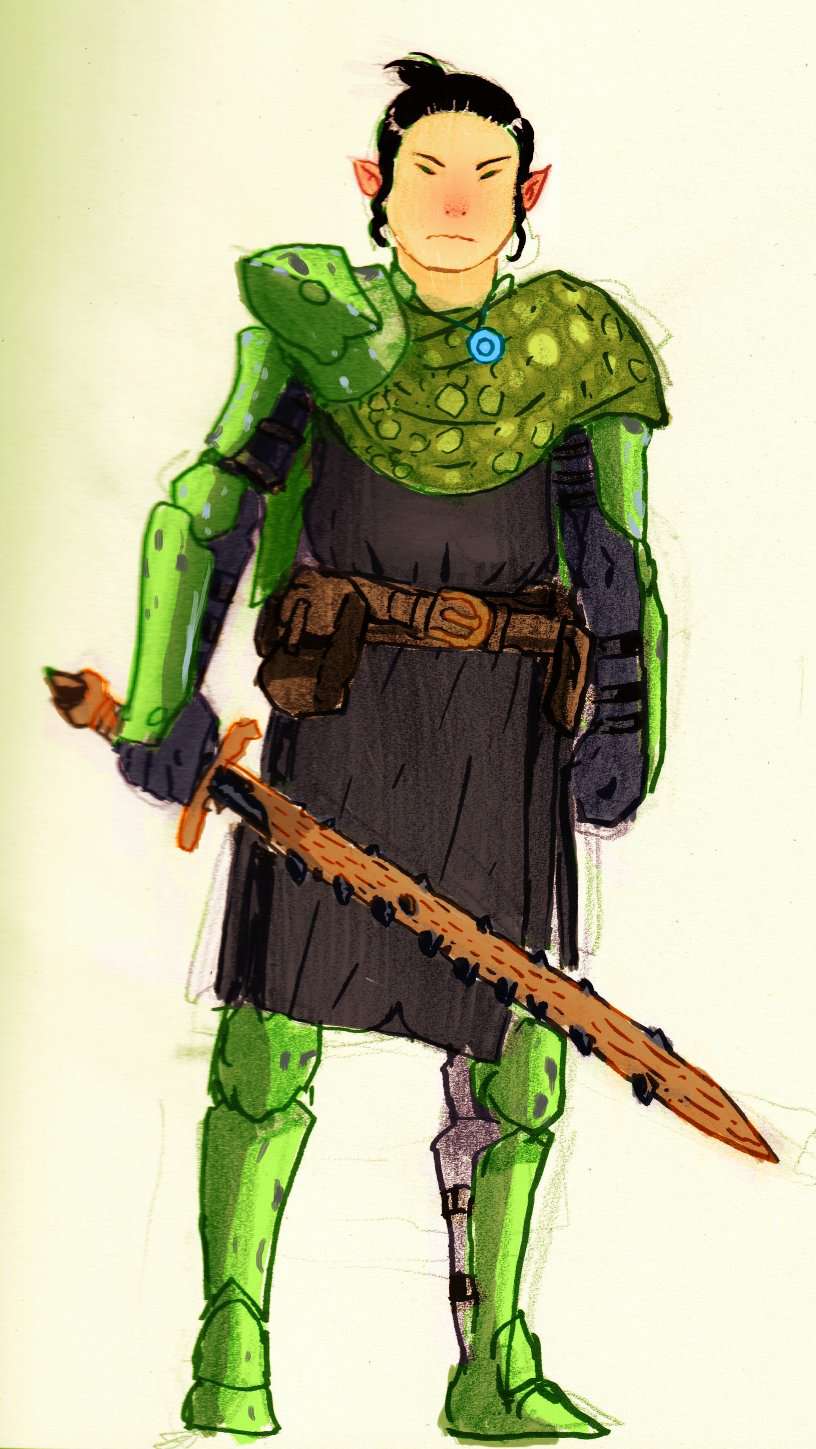
Sciathan, wielded by my character Trek, drawn by @RossySculpts on Twitter
Time for a break from the mythic items for a little bit of homebrew. My first GM created this for a campaign I’ve been playing in for four years. Sciathan begins life as a masterwork longsword made of greenwood and obsidian. While the wood makes it a fragile weapon, Sciathan is a living weapon and thus can regrow to repair itself by planting it in the ground and watering it to restore 1hp per hour, allowing it to regrow even from being destroyed.
Sciathan can also be transformed into a variety of different weapons once per long rest: katana, estoc, naginata, spiked gauntlets, shortsword, armour spikes, club, composite longbow or shortbow, as well as a waster version of any of these weapons.
Its bow shapes gain composite for each enhancement bonus it has and when turned into a light weapon or shortbow the remaining materials can become an accompanying light weapon. If the two halves are not reuinited at the end of the day one weapon withers away and it cannot transform again for 1d4 days.
Sciathan can also become a selection of other objects such as: a scabbard (including a bladed scabbard), a saw or sawback sword, an umbrella/parasol frame, or a balancing pole. Your GM can also add additional forms at their discretion
What’s more is if sciathan is used by a spellcaster it can be transformed as a swift action using a 1st level spell slot. If it is specifically wielded by a magus they can use their arcane pool to transform Sciathan instead. If they are a bladebound magus and wish to make Sciathan their blackblade, Sciathan’s pool can be used for the transformation. This replaces the blackblade’s normal ability to be indestructive while there is one point in its pool.
Why Sciathan is great:
- Its ability to regrow means you don’t need to worry about sunder builds completely destroying your favourite weapon
- The sheer versatility means Sciathan can be wielded by practically any class. A cavalier can have a reach weapon while also have quick access to a sidearm, a ranger can have a bow and change to a shortsword and dagger at a moment’s notice. You have a weapon which grows with you and can be moulded to your needs
- You can also get around the fact that Pathfinder typically makes changing your combat style a huge money sink late into a campaign. Now you can easily swap your magic longsword for a magic bow and only need to find somebody to help retrain your feats if necessary
- Something pretty funky is if you spend the spell slot or arcane point, you could change Sciathan’s shape during a full round attack. Useful if you’re using it as a slashing only weapon and discover you need piercing damage after your first hit
- The waster can actually be surprisingly useful. If you’re fighting in a tournament or if somebody has been brainwashed against you, doing nonlethal damage can be done without that pesky -4 penalty to attack
Build requirements:
- 3500gp
- Feats: Craft magic arms and armour
- Spells: Shape Wood and Preserve
Sciathan stats:
- Price: 7000gp - Given the nature of homebrew determining a price when a weapon has nonstandard abilities can be tough so your GM may choose to alter this number as they see fit
- CL: 9th
- Weight: 3lbs
- Aura: Moderate transmutation
14. Pistol of the Infinite Sky (Base)
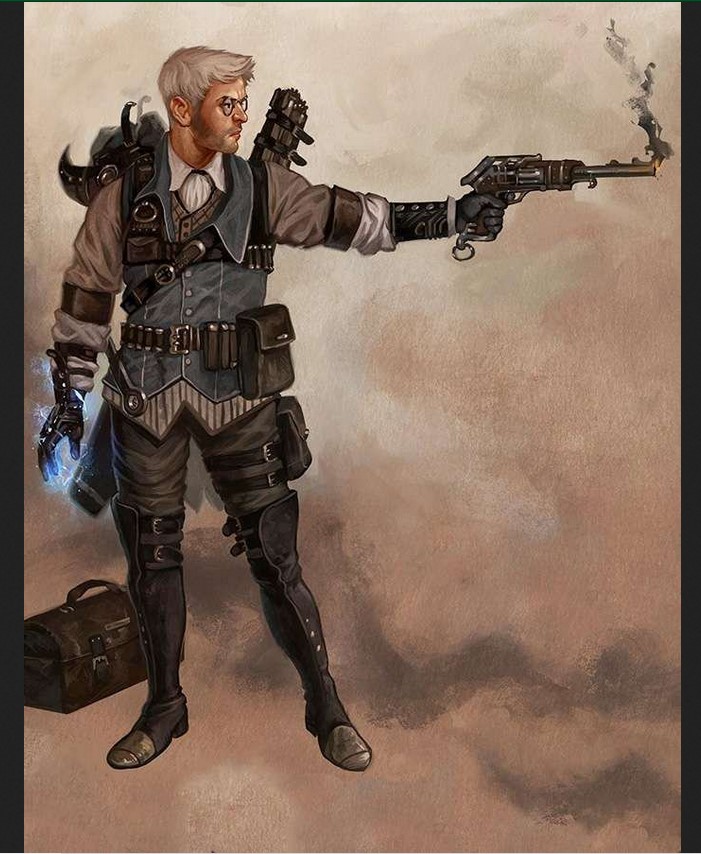
A very lucky gunslinger
Time for a break from mythic weapons, as powerful as they are. Not everybody uses those optional rules so I’m going to show you what is certainly among the best firearms in the base game.
This is a +5 pistol which never needs reloading. Simple as that. Each time you make a shot it gets automatically refilled. If you have even a passing familiarity with firearms I don’t need to tell you how incredible that is.
Why Pistol of the Infinite Sky is great:
- +5 which is the maximum enhancement bonus. Literally can’t get better than that
- Instant reload means you no longer need rapid reload to reduce your reload time to a move action. Spend the feat on something else or retrain it
- Instant reload also means you can make a full round attack with this pistol or run and gun as needed without any feats required. If you aren’t using other firearms, retrain those feats!
- No more dealing with threatening enemies when your gun is empty. Just shoot them
- Attacks of opportunity with your gun! Enemy tries to run away? Shoot them. Prone enemy tries to stand? Shoot them. Enemy mage tries casting a spell up close? Shoot them. Enemy gunslinger tries to reload like the massive loser they are? Shoot them
- You have a free hand. If you’re lucky enough to get two of these bad boys you can two-weapon fight with them. Or you could keep a shortsword handy if somebody gets too close for your liking, which there is feat support for
- Invest ranks into use magic device and you can wield wands and staves your wizard makes for you. Probably nothing too high level as you only get 4 skill ranks per level (ask your DM to add the background skills rules, you can thank me later)
- With a +5 enhancement right out of the gate you can pick whatever enchantments you’d like to compliment your chosen build if you have the cash leftover from actually getting this thing
Build requirements:
- 37,300gp
- Feats: Craft magic arms and armour
- Spells: Reloading hands
Pistol of the Infinite Sky stats:
- Price: 73,300gp
- CL: 15th
- Weight: 4lbs
- Aura: Strong conjuration
13. Swashbuckler’s Rapier (Base)
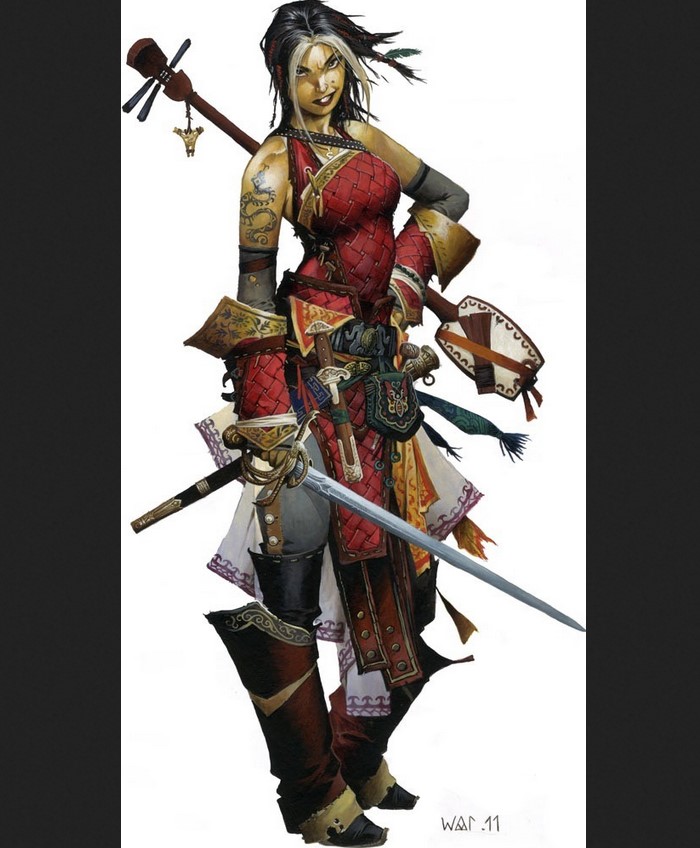
A vicious swashbuckler
A very innocuous name but it’s a perfect explanation. Any swashbuckler wielding this +1 rapier can spend one panache point to add bane for one round. It has to be a subtype of humanoid but you’re more than likely fighting mostly humanoids anyway so that’s not much of a limitation.
Why Swashbuckler’s Rapier is great:
- The ability to pick and choose bane is never a bad option. Treat your weapon as having an extra +2 enhancement and add 2d6 damage to whoever you happen to be fighting
- One round only may seem stingy but remember that this weapon is best on a swashbuckler. You can parry and riposte any incoming attacks. With the extra enhancement you’ve got a better chance of parrying and with the extra damage you’ve got a better chance of killing them that round and recovering some panache if you pick your target carefully
- Rapier has a crit threat range of 18-20 so you’ve already got a decent chance of getting a crit threat. Get keen on it and it’s 15-20
- 7320 gold to buy or 3820 if a party member can make it. Very good value so you should be able to get this fairly early
- With no other enchantments, there’s also a lot of room to customise this for your character
Build requirements:
- 3,820gp
- Feats: Craft magic arms and armour
- Spells: Magic weapon
- Special: Creator must have at least five ranks in craft weapon
Swashbuckler’s Rapier stats:
- Price: 7,320gp
- CL: 7th
- Weight: 2lbs
- Aura: Moderate transmutation
12. Arrow Splitter (Base)
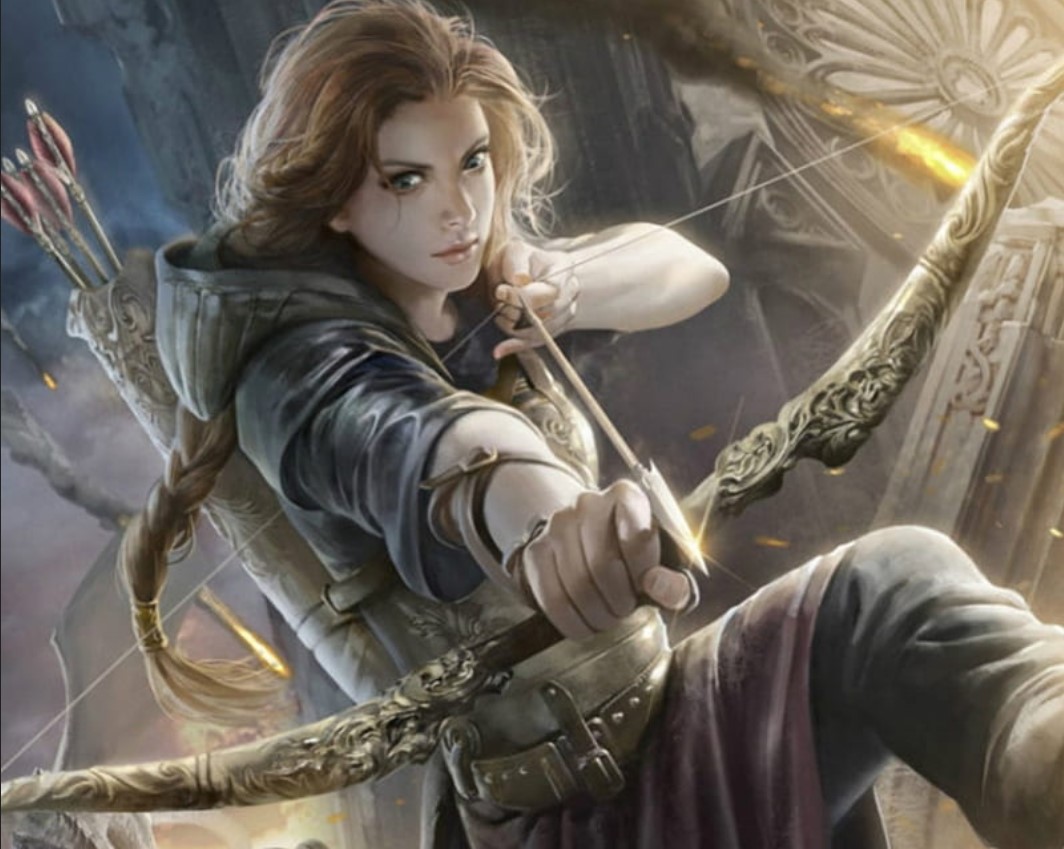
A huntress ready to split some arrows
Ever wanted to be Robin Hood? Well here’s your chance. This bow is expensive as hell but worth the price. It’s +5 and has the enchantment second chance, allowing you to reroll a missed attack once per round.
What makes this bow really scary is how it effectively gives you a ranged version of the feat hammer the gap. Ranged builds can struggle early on but once you’ve got a few feats under your belt. Ranged builds are generally going to be grabbing rapid shot to add an extra attack on top of their regular attacks as well as manyshot, allowing them to fire two arrows at once with one of their attacks.
Why am I explaining ranged builds to you? Well that’s because Arrow Splitter does an additional d6 each time you successfully hit something that round. That means your first arrow does normal damage, the second gets 1d6, the third 2d6, the fourth 3d6, and so on and so forth.
Why Arrow Splitter is great:
- Bow users tend to have a lot of attacks at high levels. Combine this with Arrow Splitter’s attack reroll once a round and you’re going to be landing a lot of those, but instead of turning your enemies into pin cushions you’re driving all those into a single spot and rolling more d6s than the rogue
- Go down the snap shot route of feats and you can threaten with a bow up to 10ft away as well as +2 to damage confirming crits with you make attacks of opportunity. This bonus scales too so only gets scarier.
- Take combat reflexes too. Your dex is gonna be good so you can make a lot of attacks of opportunity with this and if you’ve grabbed greater snap shot you threaten similarly to large creatures. Nobody is going to want to get close to you
- Even ignoring this, the ability to reroll a single attack a round is always awesome. Combined with this, you’re going to be terrifying
Build requirements:
- 90,375gp
- Feats: Craft magic arms and armour
- Spells: Ricochet shot, sonic thrust
Arrow Splitter stats:
- Price: 180,375gp
- CL: 15th
- Weight: 3lbs
- Aura: Strong evocation
11. Bastard’s Sting (Base)
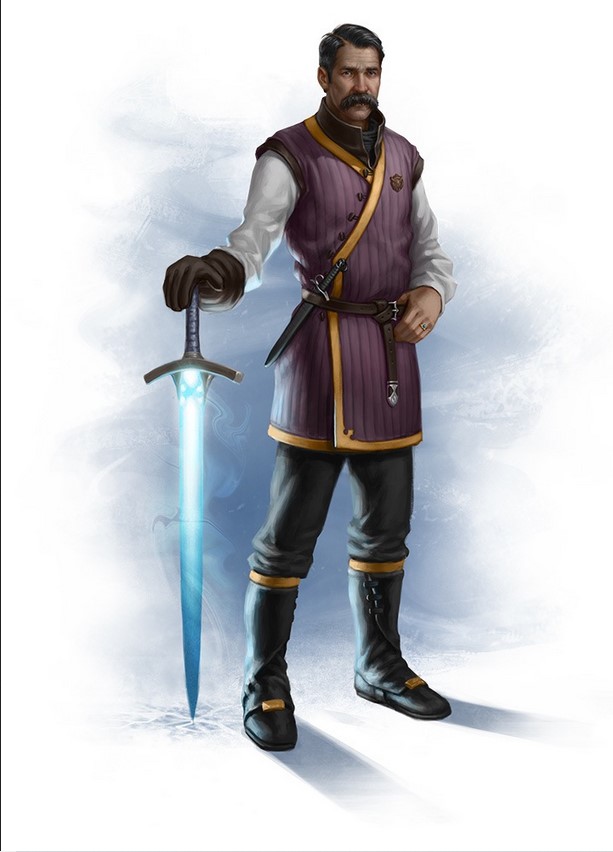
A dashing antipaladin and his sword
Time for an evil weapon and what an evil weapon this is. Normally, this is a +2 adamantine bastard sword. Not bad. Decent for sundering I guess. But once an antipaladin picks it up, this sword becomes a +5 unholy adamantine bastard sword.
Unholy deals 2d6 damage to any good aligned creatures struck with it which is already a good start if you’re playing an evil campaign. It also bypasses DR/evil if you find yourself fighting other evil creatures.
Ordinarily unholy grants one negative level to any good aligned creature who tries to wield it but as Bastard’s sting only has this enchantment while in the hands of an antipaladin, which is required to be chaotic evil, this doesn’t apply. But it was unlikely to come up anyway so you’re not really missing anything anyway unless your GM likes to have enemies attempt to steal weapons. But Bastard’s Sting is weakened in the hands of anybody other than an antipaladin anyway so you could consider this a buff.
Now for the fun abilities. While your antipaladin wields Bastard’s Sting, any living creatures who start their turn adjacent to you take 2d6 negative energy damage. Ensure your allies stay well away from you if they don’t want to take this damage. However, undead are not affected so you’re not healing any zombies you find yourself fighting.
If you deal this negative energy damage to at least one living creature you gain fast heal 5 which is very nice. Make sure you’re stepping up to enemies and keeping them in reach to keep this going.
On top of this you can use the spell unholy blight at will as many times as you want using your class level as your caster level. 1d8 damage per level and makes affected creatures within 20ft sickened. Will save halves the damage and negates the sickened effect but any paladins within range take a -2 to their save.
Why Bastard’s Sting is great:
- Make your antipaladin a tank and draw as many enemies close as possible to make best use of your negative energy damage. Adds fast heal to compensate for the damage you’re going to take
- With heavy armour and shield proficiency, you can make your AC nice and high to reduce the number of attacks you’re going to take while still making best use of your negative energy
- Once you’re surrounded you can use unholy blight to dish out some nice AOE damage and sicken your foes. Once they’re sickened they’re going to find it harder to hit you and make their saves so cast it again to keep dishing out that damage and let your teammates clean up
- Thanks to the adamantine you can also make your antipaladin a good sunder build as you can ignore up to 10 hardness
- The bastard sword can either be wielding one handed or two handed if you grab exotic weapon proficiency. Either 1.5x strength to your damage or a shield to boost your AC. Or you can have the best of both worlds with a quickdraw shield, allowing you to switch grips as necessary
Build requirements:
- 63,035gp
- Feats: Craft magic arms and armour
- Spells: Unholy aura and unholy blight
- Special: Creator must be evil
Bastard’s Sting stats:
- Price: 123,035gp
- CL: 18th
- Weight: 6lbs
- Aura: Strong necromancy
10. Bloodthirst Dagger (Base)
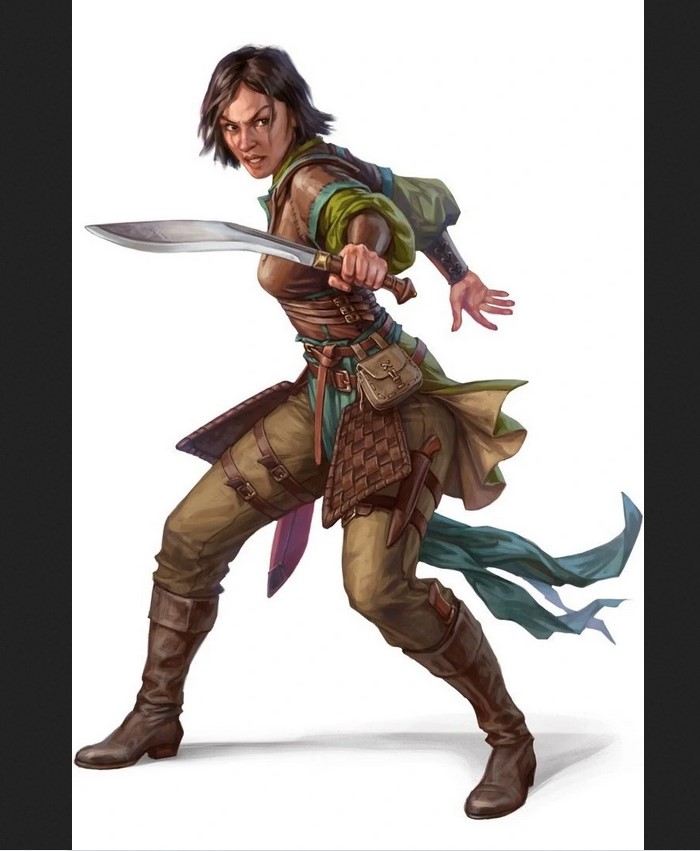
A bloodthirsty rogue with her bloodthirsty knife
Are you a rogue? Do you love knives? Did you buy more d6 for your sneak attack than you ever actually roll? Well I’ve got the weapon for you. This +2 wounding dagger is perfect for any dagger user, be it with a shortsword as their or for a knife master rogue.
Wounding deals one point of bleed damage each time you hit somebody with that weapon. There is no maximum amount of bleed you can cause with this so pick a single target and cut them to ribbons.
Bloodthirst Dagger’s special ability means any foe still taking bleed from wounding takes an additional point of damage for each point of bleed every time you hit them. So if they’re taking three points of bleed it does +3 damage with each attack. This caps at +10 which is great at most levels.
While you can’t increase the bleed damage on a critical hit, you get to do an extra d6 bleed for every point of bleed they’re taking up to 5d6. Even better is if you’re taking any bleed damage, it’s immediately cured by making the crit.
Why the Bloodthirst Dagger is great:
- The wounding enchantment alone is great for two-weapon fighting with daggers. Get another wounding dagger (if you can) and you can rack up bleed damage very quickly
- If you can get a second Bloodthirst Dagger, your GM may allow bleed caused by one dagger to boost the other’s damage. If not then you’re still going to be causing a great amount of bleed but keeping track of how much bleed each has caused is going to be necessary (and a huge headache)
- This damage stacks very nicely on top of your sneak attack which if you’re a knife master rogue is a d8 rather than d6
- As somebody dealing a lot of bleed you know firsthand how nasty it is so being able to cure your own bleed on a crit is very helpful
- Bleed damage can really help in a pinch too. If you get lucky your chosen target may go below zero hp at the beginning of their turn and not get to act
Build requirements:
- 30,552gp
- Feats: Craft magic arms and armour
- Spells: bleed and inflict serious wounds
Bastard’s Sting stats:
- Price: 60,802gp
- CL: 10th
- Weight: 1lb
- Aura: moderate evocation
9. Fighting Tankard (Base)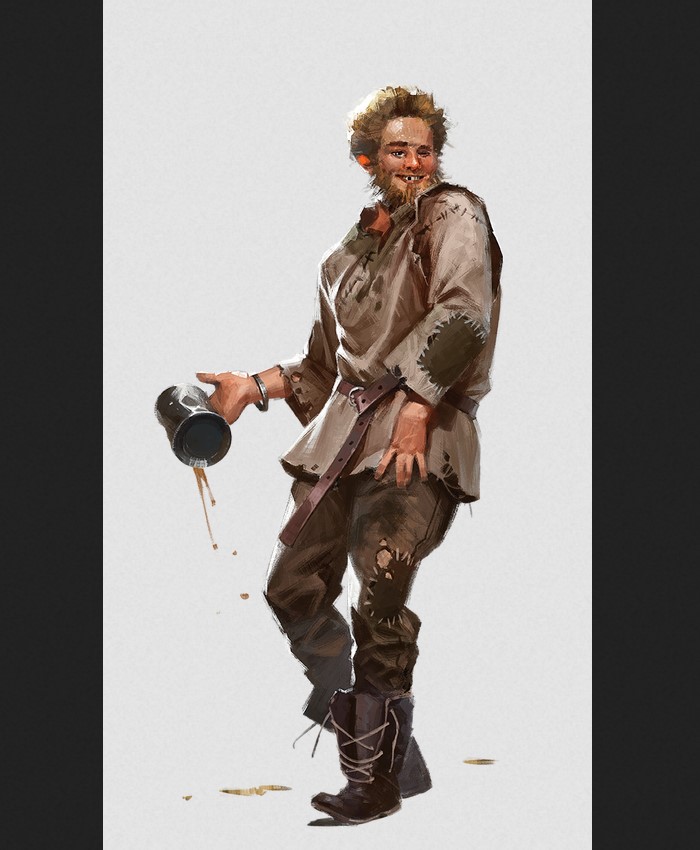
A true adventurer wielding his almighty weapon!
Okay hear me out. This thing is actually kind of awesome. The tankard is treated as a +1 light hammer so only a d4 damage but you can use it as your offhand weapon and take a bigger hammer (or something else I just think this would be cool) as your main weapon as part of two-weapon fighting. If you’re a follower of a god of drinking or luck you automatically gain proficiency which is nice for any class with limited weapon proficiencies.
What’s very cool about this tankard is it’s kind of like a handy haversack for liquids. It contains six extradimensional spaces for liquids. Simply drink and pick your potion. It doesn't even spill when you’re beating in some goblin’s brains.
Why Fighting Tankard is great:
- You have potions on hand which is fantastic for any melee character, especially two-weapon fighters. No dropping a weapon to grab a potion when you need a quick heal
- If you have a potion maker in your party this can be used for more than just cure light wounds. Bear’s endurance, bull’s strength, cat’s grace, enlarge person. Get creative and fill each space with whatever you need
- If this item weren’t funny enough already, because it’s treated as a light hammer you can throw it which opens a few possibilities for you. Wield a bastard sword with exotic weapon proficiency to one hand it then once you’ve had all your drink, throw the tankard at somebody and use a free action to swap to a two handed grip
- If you’re rich, grab a blinkback belt (unfortunately means no physical enhancement belts so talk to GM about making this work) or add the returning property (undoubtedly better) and as many other tankards as you can. Throw them while they’ve still got liquid (can’t spill remember) and watch them blink back.
- A surprising number of archetypes require you to drink alcohol like the drunken master monk, as well as the drunken brute and drunken rager barbarian archetypes. This is a great way to ensure you’ve got a nice cold one while you’re fighting dragons
- Worth noting monks can use basically any limb to attack so it doesn’t matter if one hand has a tankard in it. Use your other hand and legs while keeping important potions handy
- If you want to do this as a barbarian but still want to wield a greataxe, play a tiefling and take the prehensile tail racial trait to hold your tankard and drink from it when needed
- If you want to get really funny try multiclassing into the bard archetype juggler which effectively grants you a third hand by allowing you to juggle up to three items at once. Or go all in on this archetype to keep anything your party might need handy while you sing their praises
- Relatively cheap to make so you can carry a lot of potions effectively
Build requirements:
- 5,301gp
- Feats: Craft magic arms and armour, and craft wondrous item
- Spells: Secret chest
Fighting Tankard stats:
- Price: 10,301gp
- CL: 10th
- Weight: 2lbs
- Aura: moderate conjuration
8. Fist of the Pit (Base)
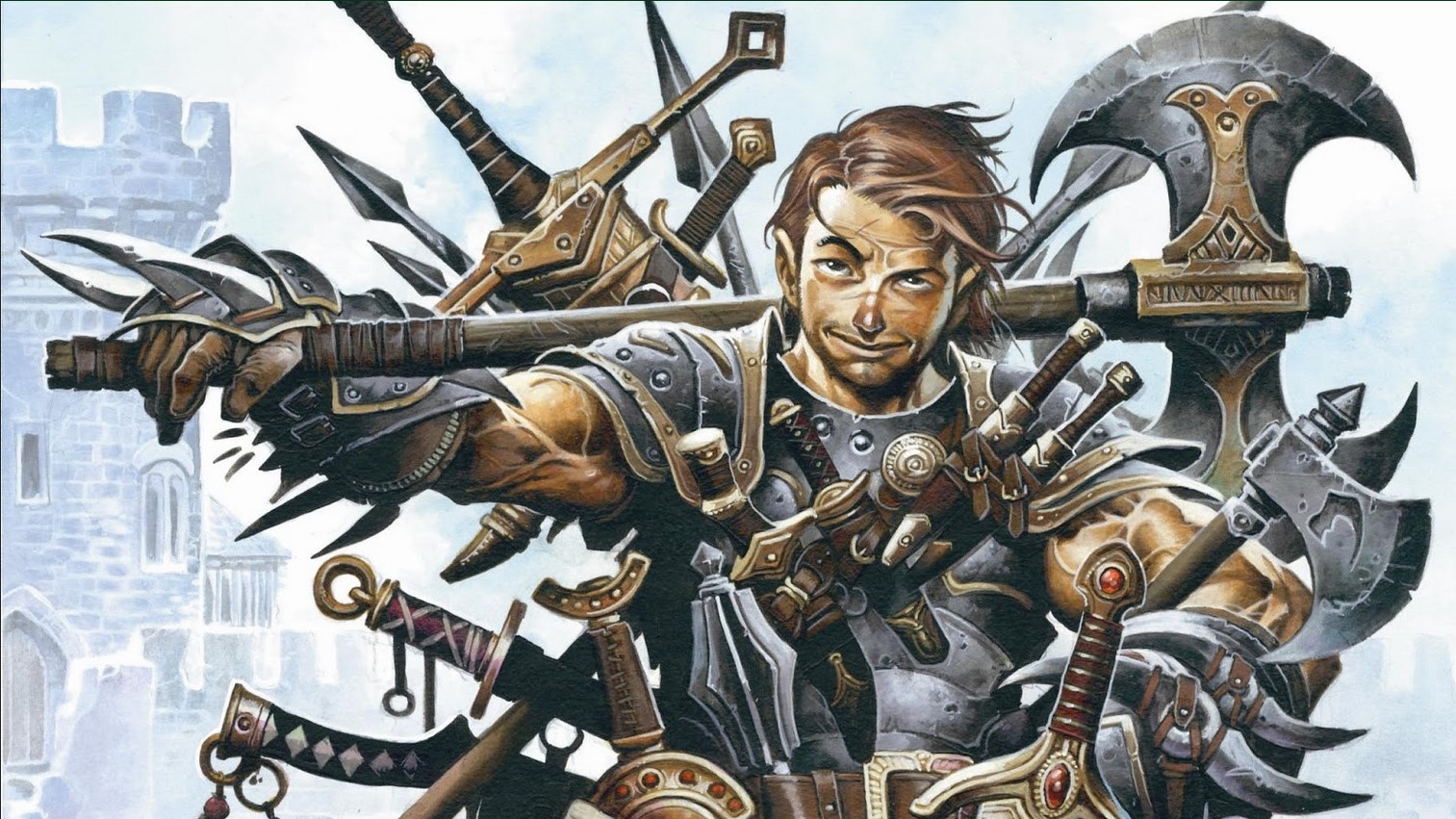
A backup weapon amongst many. All equally necessary
Spiked gauntlets already make for great backup weapons as they're always in your hand so you can always be armed even if your weapon gets broken or stolen. This particular version has the ability to cast spike pit once per day. Anybody who falls in takes 2d6 damage. Reflex negates but if they fail that foe is forced either to wait until the spell ends or to attempt to make a DC20 climb check and incur an extra 2d6 damage for doing so.
But what’s very special is that if you enhance the spike gauntlet, the extra damage also applies to the pit. It’s already a +1 spiked gauntlet so that’s 2d6+1 right off the bat. If you add some enchantment they apply to the pit too. Add fire, electricity, bane. Whatever works best for your build.
Why Fist of the Pit is great
- Literally anybody can use it. You can just treat it as a free use of pit each day and add to it with enchantments. Grab a second for two uses, they’re cheap to make if your wizard has the feat
- While it’s pretty basic to start, it’s very open ended so you can add whatever enchantments will work best for your build, party composition, and enemies you tend to fight.
- If you’re fighting a lot of one particular enemy type, add bane to do an extra 2d6 damage
- Takes an enemy out of the fight without making your sorcerer, wizard, or summoner use a spell slot and get to add extra damage. Literally no downside
Build requirements:
- 4,805gp
- Feats: Craft magic arms and armour
- Spells: Spiked Pit
Fist of the Pit stats:
- Price: 9,305gp
- CL: 6th
- Weight: 1lb
- Aura: moderate conjuration
7. Sword of Inner Fire (Mythic)
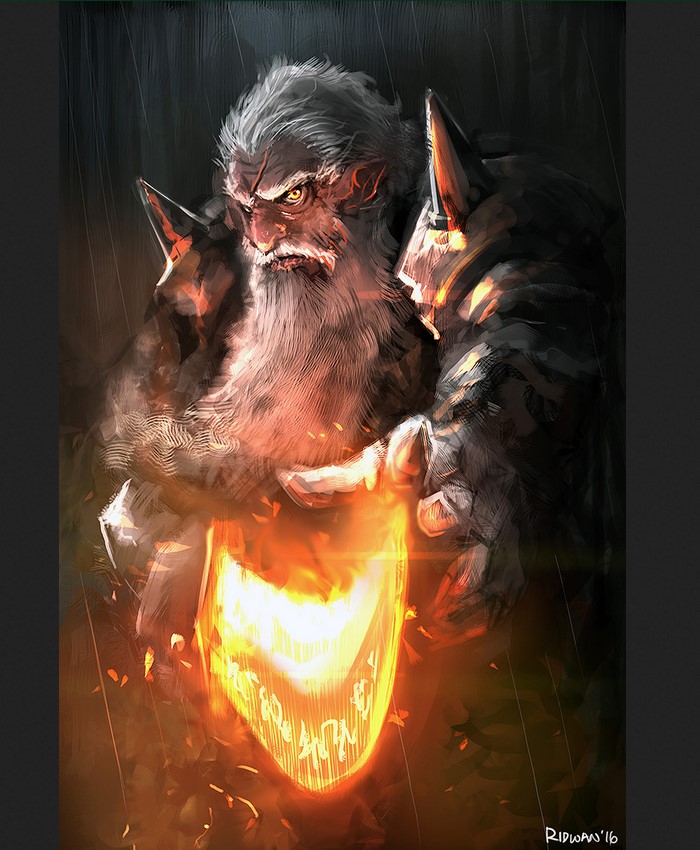
A dwarf showing off his inner fire
Now we’re going to return to a weapon from the mythic rules. This is a +1 flaming and brilliant energy longsword. We’re starting with some powerful enchantments. Flaming burst adds a d6 damage to all damage rolls and on a confirmed crit adds a d10 on top of this.
Brilliant energy turns your sword into a torch which is nice for anybody without darkvision for a lot of cases. But the best part of this enchantment is it ignoring nonliving matter. This means it ignores most types of armour and shields except maybe rosewood given that it is alive.
Something the enchantment description doesn’t mention but I would argue does work is that if you’re fighting somebody with the ability to parry, brilliant energy actually negates this ability. The sword passes through all nonliving matter so that swashbuckler’s metal sword isn’t doing anything to stop you.
This is all before we get to the unique abilities. By just being a mythic character, this sword ignores both fire resistance and immunity which is awesome. Always sucks to be specialised in a particular type of damage only to be told no by everything you’re currently fighting.
What initially seems like a drawback of the sword, which is that you can’t damage undead or constructs, you can spend a mythic point to do this for one round. Steep though so I hope you’ have a backup weapon. Still can’t damage inanimate objects though so don’t go taking sunder feats.
If you have a good backup weapon, once you’re at 3rd tier of mythic you can absorb the sword as a swift action to get +5 AC and a +2 luck bonus to saving throws. Turn yourself into an absolute tank when necessary.
Why Sword of Inner Fire is great:
- You’re going to have no problem hitting anybody reliant on armour thanks to brilliant energy
- You can absorb the sword as a swift action, so you can finish off somebody near you, buff your AC and saves, then approach any pesky remaining archers or spellcasters who are beyond your movement without worrying as much about getting hit
- Retrieving your sword is a swift action so keep it in you at all times. If somebody tries to get the jump on you, there’s no issue. You’re better protected and gran grab your weapon quickly
- Circumstantial but if you’re going somewhere that doesn’t let you take weapons in you can absorb your sword and claim to be unarmed
- Ignoring fire immunity and resistance is fantastic given how many creatures resist it
Build requirements:
- 75,815gp
- Feats: Craft magic arms and armour, and mythic crafter
- Spells: Flame strike, gaseous form, instant summons, and shield of faith
Sword of Inner Fire stats:
- Price: 151,315gp
- CL: 16th
- Weight: 4lbs
- Aura: Strong transmutation, fire
6. Warbringer (Base)
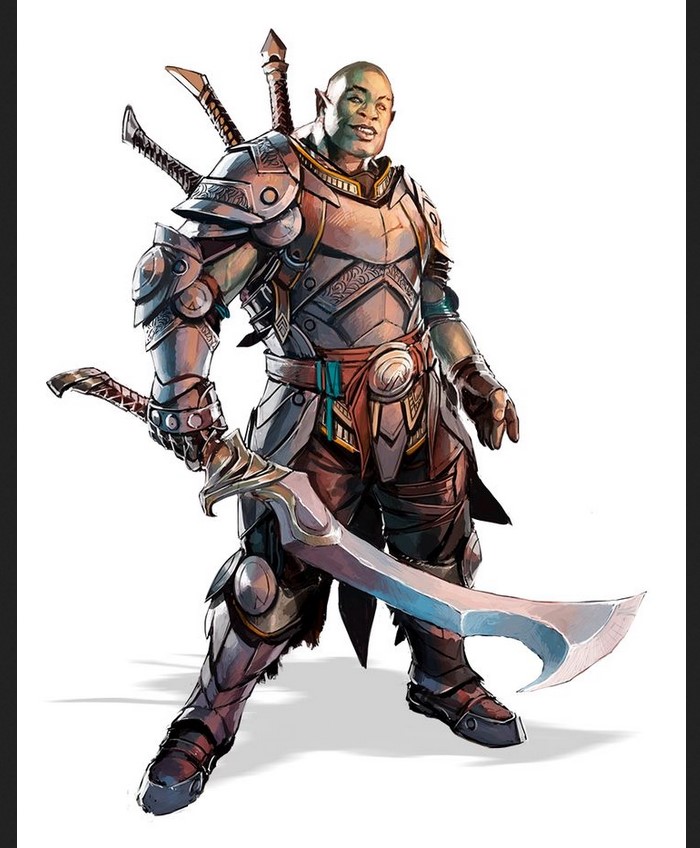
An orc ready to bring the war
A +3 keen and vicious falcion. As a reminder, keen doubles a weapons’ threat range so this falchion will crit threat at a 15, complimenting its main ability very nicely. Vicious is a risky enchantment as it deals 2d6 damage to an enemy while dealing 1d6 to its wielder. Risk versus reward here.
Warbringer’s main ability gives the wielder one round of rage each time they confirm a crit. If the wielder is a barbarian (a nice GM might let this apply to bloodrager too) then they get to add an additional round to their daily total.
In addition, when a crit is confirmed, the target of the crit is subject to the effects of murderous command and will go to strike their nearest ally. If there’s an ally adjacent then great, keep attacking. If they have to move then you get an attack of opportunity for them moving in your threatened area!
Why Warbringer is great:
- On a 15 to crit threat you’re going to be threatening 25% of the time. If you get lucky enough to keep the momentum going the bonus strength from rage will help you keep confirming. Best on a barbarian to earn back expended rounds of rage to stay angry all day
- Make yourself an appealing target so you get at least two enemies on you at a time. Make your full round attacks for your best chance of getting a crit threat
- Effects of murderous command can even ruin enemy flanks. Force one of them to run around you (invoking attack of opportunity) to hit their ally. No more bonuses for them and you can still keep attacking if you have any left when you made your crit
- The wording “gains the benefits of rage for one round” is important because this means you only get the strength and constitution bonus. No AC penalty and you can use mental abilities like spellcasting, allowing this sword to work on martial casters like magus, warpriest, and skald
- Also great on magus if you combine it with spell combat. Whenever you cast a touch spell you get an extra free attack meaning you’re making a lot of attack rolls in a full round by the time you can afford this. 3-4 I’d guess. More if you have somebody casting haste for you. The rage even compensates for the -2 penalty to attack rolls spell combat invokes
- The bonus to con when you’re raging helps compensate for that d6 damage each round. If you play paladin, you can go for a long time by combining your occasional rage with lay on hands
Build requirements:
- 30,875gp
- Feats: Craft magic arms and armour
- Spells: Keen edge, murderous command, and rage
Warbringer stats:
- Price: 61,375gp
- CL: 14th
- Weight: 8lbs
- Aura: Strong enchantment
5. Vaultbow (Base)
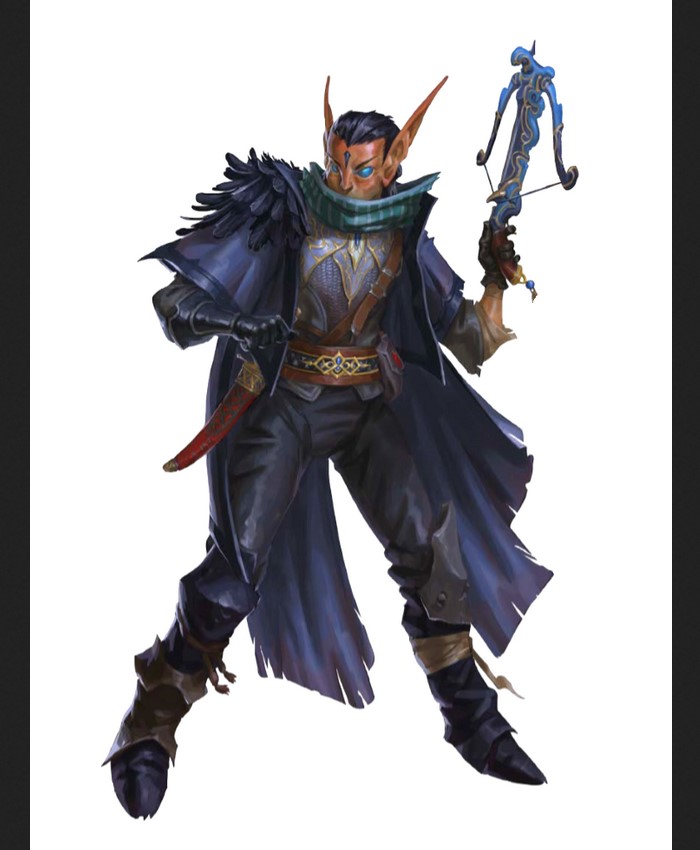
A battle ready tiefling
This weapon is a bit similar to the Pistol of the Infinite Sky as it reduces your need to reload. It is a +1 light repeating crossbow with an extradimensional space for 20 bolts. This makes your crossbow more similar to a longbow as it allows you to make multiple attacks before reloading. You can full round attack for a few rounds before needing to reload as a move action. Not as good as the Pistol of the Infinite Sky but a fraction of the cost and much better range.
Vaultbow also has an extra ability which will make your teammates love you. Three times a day you can choose to turn one of your bolts into a chain and attempt to entangle a creature with it using your crossbow’s normal attack. No save against becoming entangled and it works on anything large or smaller. Flying creatures need to make a DC15 reflex save or fall to the ground. Escaping requires a DC 30 strength, combat manoeuvre, or escape artist check.
Why Vaultbow is great:
- With a capacity of 20 bolts you can make attacks before having to worry about reloading. Grab rapid reload and even once the space is empty you can reload extra bolts as a free action. Give yourself rapid shot and that’s yet another attack each round
- If you’re not playing a dedicated ranged build this makes a fantastic sidearm thanks to not needing to reload for 20 attacks. Switch hitters can get off a few attacks without the need for rapid reload. Rangers save a feat for something else like boon animal companion. I would actually argue this makes a better sidearm than primary weapon because of this. Given rapid reload lets you reload light crossbows for free anyway the 20 bolt capacity isn’t that useful if you’re going all in on playing a ranged build
- Entangling on an attack roll is great. All you have to do is hit and an enemy giving your allies trouble can’t move as far and takes penalties to attack rolls and dexterity. They can’t charge or run ether
- Useful for enemy spellcasters too as it makes them roll concentration checks to cast spells
- Knocking flying enemies out of the air can be very useful as for a fair chunk of your campaign not everybody can fly, making such enemies very bothersome
- Cheap to make so worthwhile as a sidearm for more melee oriented builds while letting you make a good number of ranged attacks without requiring a feat investment
Build requirements:
- 14,550gp
- Feats: Craft magic arms and armour
- Spells: Chain of perdition and secret chest
Vaultbow stats:
- Price: 28,550gp
- CL: 13th
- Weight: 4lbs
- Aura: Strong conjuration
4. Thorn Bow (Base)
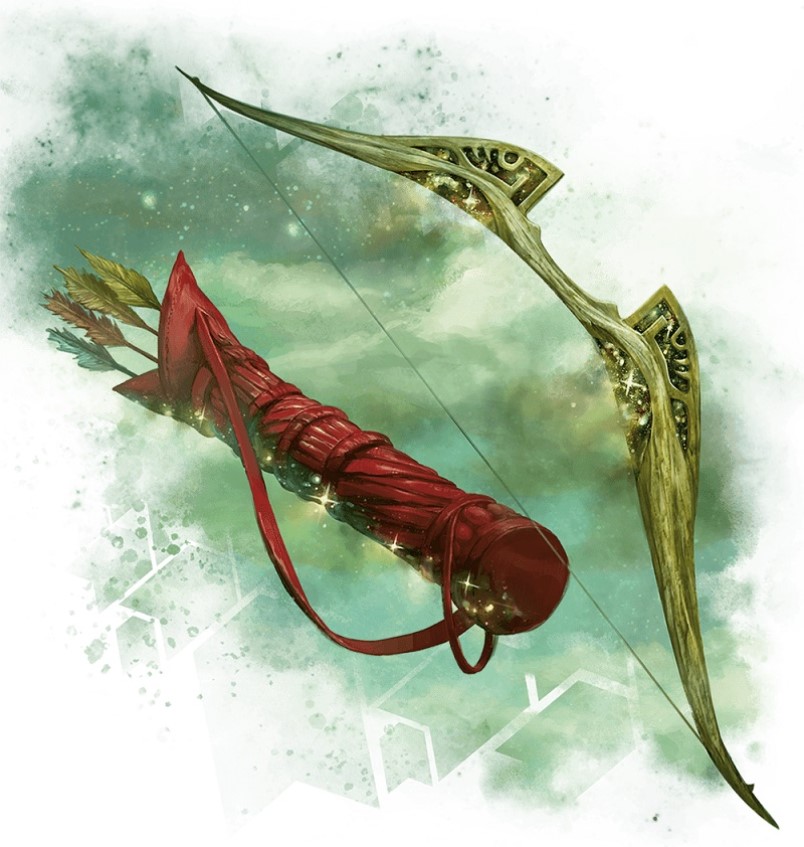
A prickley weapon
A +2 lesser designating composite (+3) longbow. Lesser designated grants your allies a +2 morale bonus on melee attack and damage rolls against any creature you hit with Thorn Bow.
Once per day, as a standard action, you can use a standard action to fire an arrow. A wall of thorns is created centred on where it lands. This spell is long but the short version is that anything within the wall takes 25 damage minus their flat footed AC. Moving requires a strength check and for every five points by which this check is passed the creature gets to move five feet up to their maximum movement.
Why Thorn Bow is great:
- Lesser designated is super useful to your allies, especially if enemies have high AC and they need that bonus to make their attacks more consistently
- Wall of Thorns is an amazing area control spell. Strength checks are required just to move and each time affected creatures move they take damage
- Especially deadly against dex builds as their flat footed is going to be awful so they aren’t resisting much of that damage and are going to be struggling to move very far
- You also get to decide how to orient the wall of thorns so you can make best use of it. With CL9 on this weapon you have a 90ft cube to play with. Get your placement right and your enemies are going to struggle
- Throw some fire on the wall once your enemies are trapped. Magic fire burns away wall of thorns within ten minutes so they’ll be taking a lot of fire damage before they’re free
Build requirements:
- 30,200gp
- Feats: Craft magic arms and armour
- Spells: Instant enemy and wall of thorns
Thorn Bow stats:
- Price: 59,700gp
- CL: 9th
- Weight: 8lbs
- Aura: Moderate conjuration
3. The Spiteful Scimitar
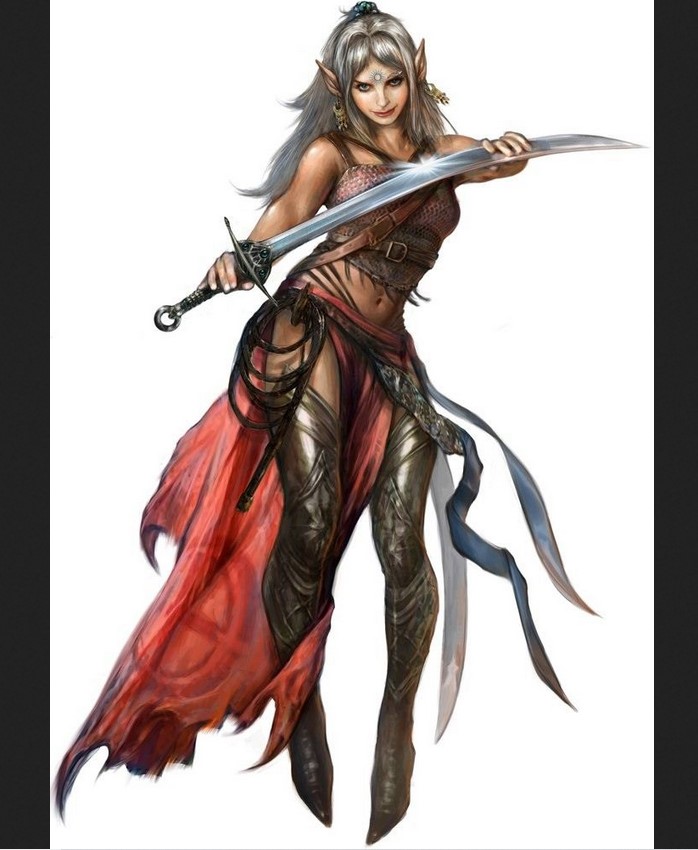
A spiteful scimitar with a spiteful wielder
A +2 cruel, furyborn scimitar. Cruel sickens any fightened, shaken, or panicked creatures struck with this weapon for one round. If you kill or knock them out then you gain 5 temporary hit points for ten minutes
Furyborn increases your weapon’s enhancement bonus by +1 each time you strike the same creature up to the maximum enhancement bonus of +5. This enhancement bonus goes away once that creature dies, you hit a different creature, or after one hour.
Spiteful scimitar’s special ability allows you to entangle and nauseate an opponent you successfully hit three times a day. They are entangled for 1d4 rounds and a DC22 fortitude save negates the nauseated condition. If they fail then nauseated lasts as long as they are entangled.
Why Spiteful Scimitar is great:
- Great for charisma builds where you’ll attempt to frighten, shake, or panic enemies by letting you sicken them. Even better if you have a wizard throwing out relevant spells
- Temporary hitpoints are always welcome. As they last ten minutes they can carry forward to the next encounter
- Enemies that take more attacks to take down will become progressively easier to hit. Just make sure you’re able to focus on one at a time by having a party member good at crowd control
- Nausea adds yet another condition you can add on top of the other stuff you’re likely doing
- Entangling enemies is great. Makes the trickier enemies even easier to deal with
Build requirements:
- 37,815gp
- Feats: Craft magic arms and armour
- Spells: Death knell, cause fear, rage, and sickening entanglement
The Spiteful Scimitar stats:
- Price: 75,315gp
- CL: 11th
- Weight: 4lbs
- Aura: Moderate abjuration, transmutation, and necromancy
2. Talons of Leng
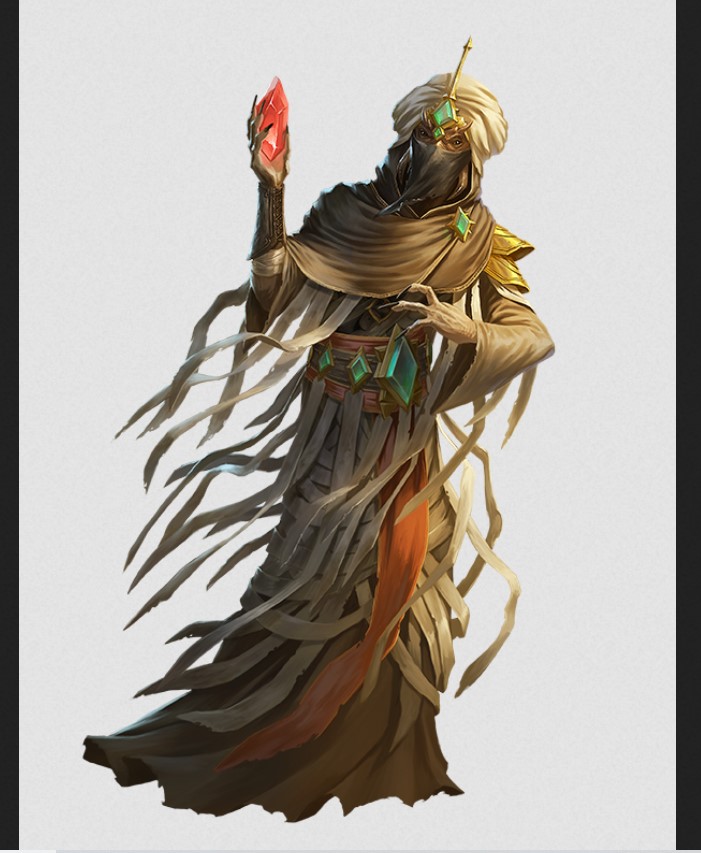
Some nasty claws
When worn these talons grant the wearer claw attacks with a +3 enhancement bonus and d4 damage. They have a x3 crit multiplier and on a confirmed crit require the target to make a DC20 will save or they become permanently insane and thus subject to confusion unless they find somebody with at least greater restoration. If they pass they are still confused for one round.
However, they do reduce the wearer’s wisdom score by -2. They can be combined with other weapons and natural attacks but are treated as a secondary attack and so will take a -4 penalty to their attack rolls.
Why Talons of Leng are great:
- Even one round of confusion is fantastic. While they only crit on a 20, you will get quite a few attacks with them in a full round so there are a few opportunities to crit. You could always get keen but that still only gives you a 10% chance to crit threat so may not be worth the expense
- Permanent insanity probably isn’t going to be that long for most enemies as you’re almost certainly going to be trying to kill them but stopping them from choosing their actions between then and now is still fantastic
- If your GM rules that you can take the improved natural attack feat while wearing the talons you can bump them up to a d6 each which is much nicer
- The wisdom penalty isn’t actually too nasty so long as you’re not a monk, shifter (unlikely anyway), or a wisdom-based caster like a druid. Just make sure you have enough for your will save to not be awful
- Put them on an animal companion to give them magic attacks without needing to cast magic fang
- What you could do is, for example, put them on a bear’s hind legs to grant them an extra two claw attacks. You can do this with a summoner’s eidolon via the claw evolution so I see no reason you couldn’t do this on an animal
Build requirements:
- 33,500gp
- Feats: Craft magic arms and armour and craft wondrous item
- Spells: Greater magic fang and insanity
Talons of Leng stats:
- Price: 67,000gp
- CL: 15th
- Weight: 1lb
- Aura: Strong transmutation
1. Channeler’s Aspergillum
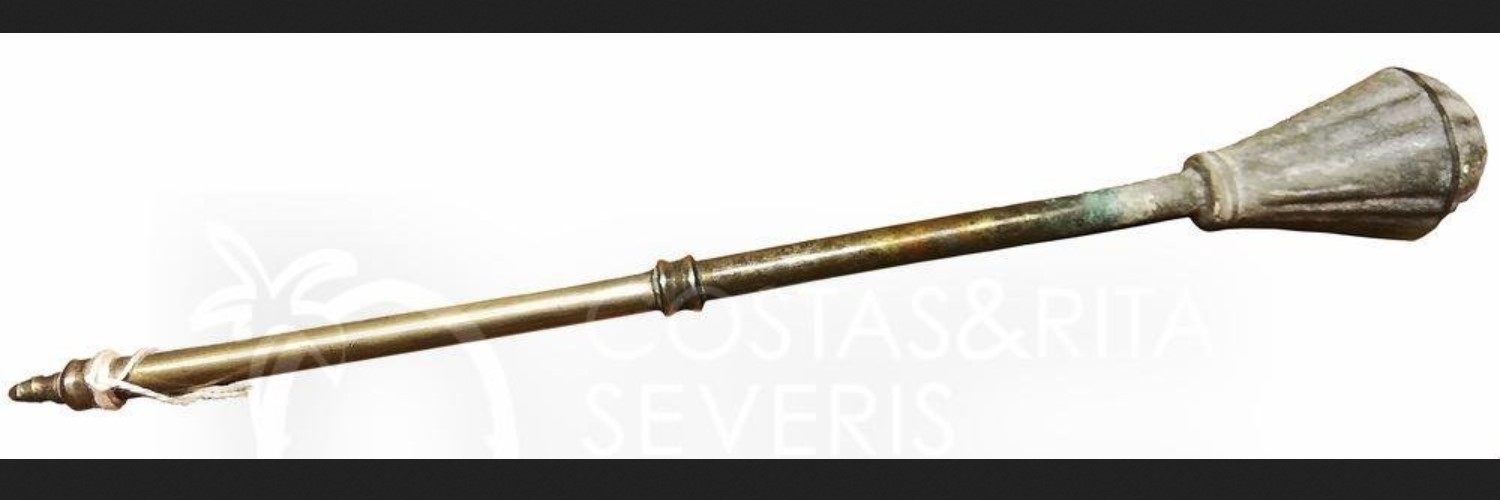
The weapon of any self-respecting priest
This is a +1 battle aspergillum. For those not in the know, an aspergillum is a tool used for sprinkling holy water. The battle version is basically a morningstar with a hollow head. This thing is a healer’s best friend. By filling it with holy water you can affect up to nine creatures with cure light wounds in a 30ft cone. Fill it with unholy water and you can do mass inflict light wounds instead. Pretty nice all in all but you can only do this three times a day.
Even better is if you have the ability to channel energy you can also expend holy water stored in the aspergillum to treat your effective caster level as two higher for the purposes of channelling energy for some extra healing. That’s an extra d6 which can go a long way for group healing. Or damage if you’re using it to hurt undead.
Why Channeler’s Aspergillum is great:
- Use it with two-weapon fighting with the fighting tankard and you have easy access to holy or unholy water for the aspergillum’s powers
- As a cleric you get mass cure/inflict light wounds at 9th level and they’re both 5th level spells. While you are limited to a 30ft cone this can potentially save you three spell slots
- I would argue using Channeler’s Aspergillum to increase your effective caster level by 2 is going to be better than the use of mass cure light wounds. At 9th level your mass cure light wounds is going to heal an average of 13hp and has a maximum of 17hp for each affected person whereas with channel energy can be cast as if you were 11th level so heals 6d6 per person for an average of 18hp and you aren’t limited to a cone, instead in a 30ft radius around you heal more and don’t need your party to be grouped together
- One-handed weapon so you can have another hand free to wield another weapon, as per my above suggestion, or a shield to raise your AC
- With no other enchantments you have plenty of room to enchant as you see fit
Build requirements:
- 18,305gp
- Feats: Craft magic arms and armour
- Spells: Mass cure light wounds and mass inflict light wounds
- Special: Creator must be able to channel energy
Channeler’s Aspergillum stats:
- Price: 36,305gp
- CL: 9th
- Weight: 4lb
- Aura: Moderate conjuration and necromancy
You may also be interested in:
- Top 10 Games Like Pathfinder Kingmaker (Games Better Than Pathfinder Kingmaker)
- Pathfinder Kingmaker Best General - Who To Choose?
- [Top 10] Pathfinder Kingmaker Best Weapons That Are Powerful (And How To Get Them)
- Pathfinder Kingmaker Best Advisors - Who To Choose?
- [Top 5] Pathfinder Kingmaker Best Beginner Classes That Are Strong
- Log in or register to post comments
 Home
Home PC Game Trailers
PC Game Trailers News
News Menu
Menu



![[Top 5] Pathfinder Most Fun Classes (Ranked) Fun Pathfinder Classes](https://www.gamersdecide.com/sites/default/files/styles/308x185-scale-crop--more-top-stories/public/most-fun-classes-banner.jpg)
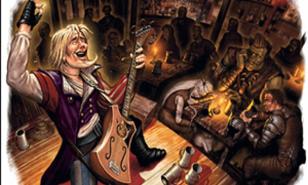
![[Top 10] Pathfinder Best Potions (And How To Get Them) Pathfinder Best Potions](https://www.gamersdecide.com/sites/default/files/styles/308x185-scale-crop--more-top-stories/public/best-potions-banner.jpg)
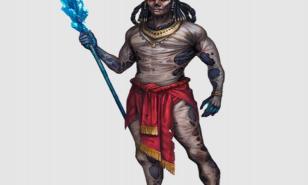
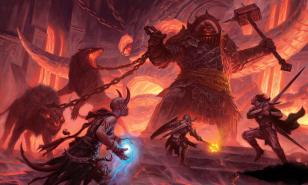
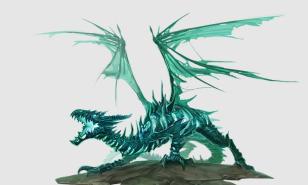
![[Top 20] Pathfinder Best Magic Items Best magic items in Pathfinder](https://www.gamersdecide.com/sites/default/files/styles/308x185-scale-crop--more-top-stories/public/best-pathfinder-magic-items-banner.jpg)
